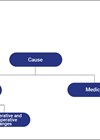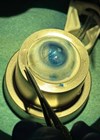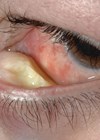Trainees
How to pass FRCOphth Part 1 on the first attempt
Studying for this exam makes one wonder how there is so much to know about such a small organ. The FRCOphth Part 1 examination is notorious for its low pass rate, with only 20–40% of candidates succeeding at each sitting....
A week in the world of ophthalmology: A reflective journey at New Cross Hospital
Embarking on a taster week in ophthalmology at New Cross Hospital was a decision fuelled by the desire to delve into the intricacies of this unique specialty, which blends surgical and medical traits. For foundation doctors, a taster week is...
Ophthalmology in the Middle East: Reflections from two electives in Jordan and the UAE
In the summer of 2021, I was fortunate enough to embark on two electives in ophthalmology at the Shami Eye Centre in Amman, Jordan, and Moorfields Eye Hospital in Dubai, United Arab Emirates (UAE). These eye hospitals serve distinct populations,...
How to write and publish a case report – tips and common pitfalls
Ophthalmology is an extremely popular specialty, with the competition ratio at ST1 level entry being 10:1 in 2023 [1]. Consequently, applicants are required to achieve higher portfolio scores to remain competitive. For those considering a career in ophthalmology, two points...
How to get the most out of your medical school ophthalmology placement
Ophthalmology has become a very popular speciality, generating a vast interest amongst medical students with competition for training posts increasing yearly. Yet it is often difficult to get adequate exposure to the speciality prior to applications, with very limited time...
Preparing for the Duke Elder Award
The Duke Elder examination is an undergraduate ophthalmology exam, conducted by the Royal College of Ophthalmologists (RCOphth) and undertaken by students with an interest in ophthalmology. It is a two-hour, 90-question, multiple choice exam with a broader curriculum than that...
Vitreomacular traction: natural course vs. vitrectomy vs. ocriplasmin
Over time, the vitreous gel completely separates from the retina in a process known as a posterior vitreous detachment (PVD). In some instances, however, the vitreous does not detach entirely and remains adherent to the macula. The term vitreomacular traction...
Cataract surgery training in the independent sector
I am now most of the way through my ST3 year working in Plymouth, within the Peninsula Deanery. Before the start of the year, I was approached by one of my consultants who asked if I would like to carry...
Is it NAION… Now what?
Case presentation We present the case and discussion of a 46-year-old Caucasian male who complained of immediate reduced vision following complicated neck dissection including a total laryngopharyngectomy, free flap reconstruction for a T4N3 squamous cell carcinoma (SCC) of the left...
The value of hospital placements in ophthalmology in general practice specialty training
Pratik Bikkannavar provides insights into the potential benefits a placement in ophthalmology provides General Practice Specialty Trainees (GPSTs) and its valuable purpose for the wider ophthalmic community. Ophthalmic complaints are known to account for up to 1 in every 20...
Cornea teaching techniques: one cornea donor tissue for two purposes
There is a national shortage in the UK in corneal graft material [1,2]. The majority (69%) of corneal transplants in the UK are partial thickness, with 35% being Descemet membrane endothelial keratoplasty (DMEK) [2]. During the preparation of the donor...
An anterior segment lump: a diagnostic and treatment challenge
Case presentation A 50-year-old female presented to eye casualty with a lump on the left medial lower eyelid with associated redness and occasional bleeding. The lump was present for a few months with recent enlargement (Figure 1). Her past medical...













